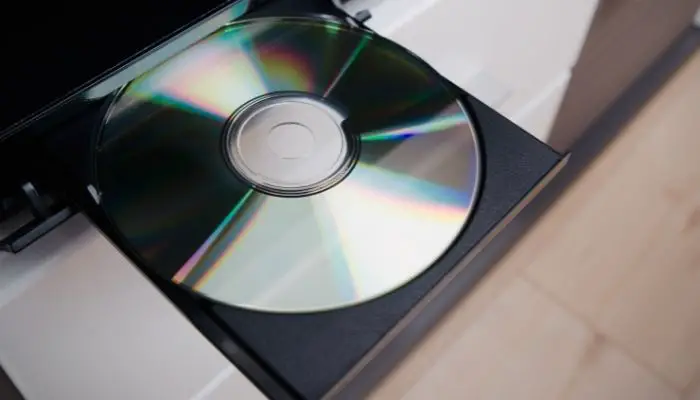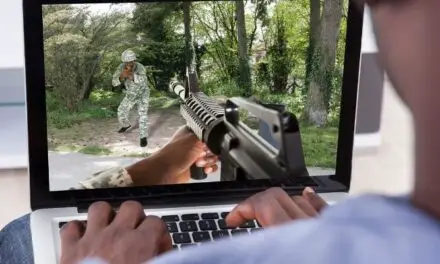You might have found an old Blu-ray player and wondered whether plugging it into your laptop would be enough to get it functioning again.
But unless your player is USB plug-and-play ready, things will get complicated real quick.
Table of Contents
Can A Blu-Ray Player Be Connected To A Laptop?

Unfortunately, you won’t be able to connect a Blu-ray player to your laptop if it’s an old player that was designed to plug into your TV through HDMI, you won’t be able to plug that straight into your laptop to watch Blu-rays.
HDMI on laptops is output only, so connecting an external Blu-ray drive in that manner isn’t going to work.
Also, you’ll struggle to do it by utilizing adapters, such as an HDMI to USB.
There’s too much compression and conversion taking place to adequately transfer the Blu-ray information to the laptop without heavy buffering.
However, you may be able to play DVDs by connecting the player to your laptop using a video capture card.
You would have to plug the HDMI-out from your video player into the HDMI-in in the video capture card and then connect the video capture card to your laptop via USB.
This might work in theory, but HDCP (High-bandwidth Digital Content Protection) may still block the content over an HDMI connection.
You may be able to get around this with an HDMI splitter but choosing the right one can be a challenge as they often look similar to one another but can behave quite differently.
The best way to watch Blu-rays on your laptop is with a USB-connected Blu-ray drive like the Pioneer BDR-XD07B or the Verbatim External Slimline.
Most external Blu-ray drives are backward compatible so you’ll be able to play DVDs and CDs too.
They also have plug-and-play capabilities for both Windows and Mac.
Using this software brings the original compressed video from the Blu-Ray player and decodes it to play on your laptop.
Most USB drives are more than capable of handling Blu-ray.
As of now, USB 3.1 Gen 2 is the best USB cable to use, as far as data transfer rates and compression.
And media player software provides full control when watching movies.
An external Blu-ray drive is also going to be much more portable than dragging around a Blu-ray player that’s probably as big as your laptop.
How To Connect An External Blu-Ray Drive To Your Laptop?
If a laptop doesn’t already come with a built-in drive compatible with Blu-ray, you can purchase one and connect it to the laptop via a USB port.
Once you have your external Blu-ray drive ready to go, you’ll need to install the latest version of some media player software such as MakeMKV or CyberLink PowerDVD on your laptop.
Finally, connect the Blu-ray drive to your laptop with the USB cable provided and you should be ready to start watching.
Depending on the drive you use, you may need two free USB ports on your laptop to make the connection.
Many laptops stake their reputation on CPU, GPU, RAM, and battery power, but are often able to boost those performances and save on production costs by axing the drive for CDs and Blu-Ray discs.
Commercially, it makes sense but it often means you may have to purchase an external Blu-ray drive if you want to watch Blu-rays on your laptop.
How Do You Know If A Laptop Can Play Blu-Ray?
When you open a laptop and look at the keyboard, a summary of the laptop’s specifications will be there and will include a label that signifies Blu-ray is compatible.
You can also check by looking at the system information:
Click on the “Start Menu“.
Enter “System Information” inside the search bar at the top.
Click the “+” icon next to the Components tab.
Now you can scan through and discover whether or not your laptop can play Blu-ray.
If not, you’ll need to get an external drive.
Typically, laptops that have optical drives built-in and are dated earlier than 2010, won’t have Blu-ray capability.
You Might Also Like: Can A Soundbar Be Placed To The Side Of A TV? (And The Best Place For It)
Why Don’t Most Laptops Come With Optical Drives?
Blu-Ray, along with almost all physical media, is dying a slow death due to consumerism.
The rise in digital media and the popularity of streaming services, along with space-saving, and copyright privileges means that most laptops don’t have them.
The Rise Of Digital Media
The last remaining Blockbuster Video store is located in Bend, Oregon and it only remains at a sort of tribute to the Blockbuster name.
Streaming services and other digital media content are largely responsible for why laptops are manufactured without optical drives.
Licensing Fees
Windows 10 would have to fork over licensing fees in order to be compatible with built-in Blu-ray drives.
Of course, this would drive up the price of laptops and so Microsoft simply doesn’t include it.
Space Saving
Though technology has come a long way and optical drives are smaller than ever, most laptop manufacturers don’t bother in favor of saving space for other, more critical internal components.
It also saves money, in the long run, to just not include them.
Copyright
Thanks to the format war between Blu-ray and HD, copyright has been an issue with Blu-ray discs. The number of changes made to the format has been costly to drive down piracy.
Physical media is going away and it’s a shame for those who still enjoy owning Blu-Ray discs or have large collections and want to use them on a laptop.
Sometimes, progress is cruel to those it leaves behind.
What Software Is Required To Play Blu-Ray?
Microsoft has discontinued Windows Media Player—and it didn’t play Blu-rays anyway—so you’ll need a good program to watch your Blu-rays on after connecting an external, optical drive.
VLC
VLC is a good option, is open source, and plays most files. However, to play Blu-ray you’ll have to do an extra bit of legwork and download two additional files and save them to a folder you create.
Blu-Ray Pro
If you’re just looking to play Blu-ray movies and nothing else, Blu-Ray Pro is a great choice and is available on the Microsoft store.
DAPlayer
Similar to Blu-ray Pro with the addition of customizable controls along with multi-track audio and video subtitles.
LEAWO Blu-Ray Player
Customizable skins, media controls, playlists, and Dolby DTS 5.1.
Also, it is free to use and plays several different media files.
You won’t lack options for downloading media players for an external Blu-ray optical drive.
There’s plenty more out there either on developer websites or available in the Microsoft Store.
So, if you find an old Blu-ray player at home and think about hooking it up to your laptop, it might end up being way more work than it’s worth.
If you can, get yourself a little high-definition TV to connect it to and save yourself the hassle.



